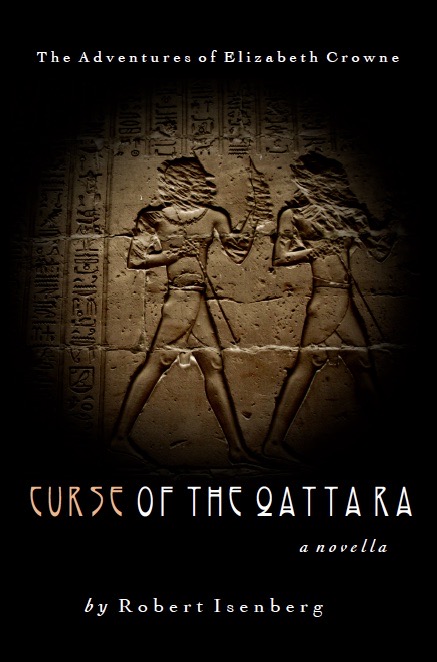
Robert Isenberg fell in love with Pittsburgh.
During a 16-year period of living there, and in the years following, Isenberg became a jack-of-all-trades, working as a journalist, a playwright, an actor and a videographer. His dream had always been, he said, to write the next Great American Novel. But somewhere along the way, a new dream took root.
His master’s degree from University of Pittsburgh gave him a reading list of Great American Novels, of “serious” fiction, and of difficult stories. As he was pursuing his creative endeavors in his spare time and working on his degree, he began to think about writing something fun.
“I loved the idea of writing something for fun… [something with a] pulp-fiction atmosphere,” Isenberg says. And, perhaps most importantly, he wanted to “do it my way.”
Enter Elizabeth Crowne.
The backdrop of her stories, compiled in multiple formats under the title, “The Adventures of Elizabeth Crowne,” is the city he loved so much. The world she lives in is pulpy, filled with adventure. And its writer is happy to keep building stories around her.

The first Elizabeth Crowne story, “The Woman in the Sky,” came out in 2016. Since then, Isenberg has been working on this serialized project, creating an audio series that covers about two arcs per year.
Physical copies of the stories are also in print.
His latest endeavor, an audiobook titled “The Mysterious Tongue of Dr. Vermillion,” compiles five of these stories into hours of listening. In it, Elizabeth Crowne, a paranormal detective with a sharp wit and quick tongue, leads listeners through supernatural mysteries, against the background of a fictionalized 1920s Pittsburgh.
These stories indulge the author’s love for classic adventure stories, embracing the hallmarks of the genre, including sidekicks, traveling and a quick-witted, snarky heroine.
But Isenberg explains that his writing style places a high importance on grounding the story in the personal and the real.
“[Elizabeth is] a female paranormal detective in the 1920s — how can that be personal?” Isenberg laughs. The answer, he explains, is to build the story around likeable characters who are dynamic and have realistic weaknesses.
“Ultimately, it’s not going to be up to me if she’s authentic,” Isenberg says.
But he says that his listeners, when they explain their enjoyment of the series, tell him that what they like the most is his centerpiece creation: Elizabeth.
“Every character is a composite of [real] encounters,” Isenberg says. He explains that he worked to create a diverse cast that felt real to him, and acknowledged the historical nature of the story.
The characters may fit a cliche, he explains, but his style is to take these character archetypes and give them something completely unexpected. This, he says, grounds the character, makes them feel more real in the subversion of what is expected.
And though embracing cliche is a part of the appeal for Isenberg in the stories he’s worked on for the last few years, his goal is to subvert some of the more problematic elements that classic pulp adventure stories have long been known for.
As an example, he says, in her travels, Elizabeth investigates in Egypt — a setting that Isenberg says he tried to write from a less colonial perspective than a traditional adventure story might take.
“[This is] such a trope, such a cliche… How can I do this differently?” he says of his writing process.
He explains that the genre allows for so much room to explore and play with characters, traits, stories. This is an exciting world for Isenberg to play in, and he plans to continue working on stories about Elizabeth and her supernatural adventures.
“The Mysterious Tongue of Dr. Vermillion” is available on Spotify, iTunes, Stitcher and Audible. Copies of the physical book are also available on Amazon and Books In Print — which means any indie bookstore can order them.


